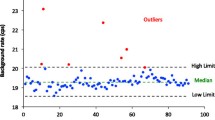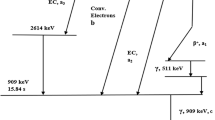Abstract
With regard to the quality control of quantification in positron emission tomography some characteristics were examined, to develop a simple method for frequent monitoring. The stability and uniformity of the detector count rate was checked by plotting the RMS deviation of the non normalized count rate and the standard deviation of the normalized count rate, each normalized to its value after the calibration or normalization respectively. Switching off a single detector did not impair the image quality, but the normalized image pixel counts were reduced by 2%–3% when a detector block was switched off. Thus in case of need, a weak detector can still be used to perform a scan. A reduced count rate capability at specific activities above 5x104 Bq/ml (∼1.5x105 corrected true system counts/s or ∼1.5x104/s for a plane) was found compared to the maximum usable activity of 8x104Bq/ml obtained 1 year earlier, indicating a drift in the count loss corrections. A variation of the room temperature changes the temperature distribution inside the gantry by 5% per °C and the drift of the sensitivity (normalized image pixel counts) is 2% per °C.
Similar content being viewed by others
Author information
Authors and Affiliations
Rights and permissions
About this article
Cite this article
Reist, H.W., Stadelmann, O. & Kleeb, W. Study on the stability of the calibration and normalization in PET and the influence of drifts on the accuracy of quantification. Eur J Nucl Med 15, 732–735 (1989). https://doi.org/10.1007/BF00631766
Issue Date:
DOI: https://doi.org/10.1007/BF00631766




